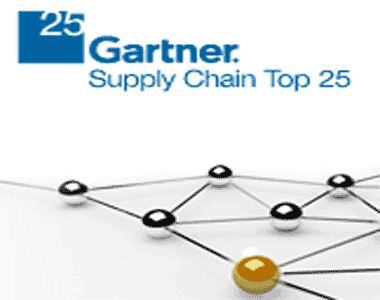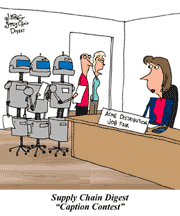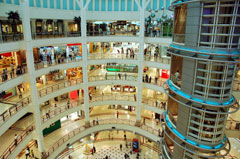The Gartner Top 25 Supply Chains Part 2
Last week, as I have done every year but the first in the 17 years of Supply Chain Digest, I reviewed the annual Gartner Top 25 Supply Chains (it wasn't yet started in year 1 of SCD). For the first six or so of those years, the top 25 list was published by the then AMR Research, unveiled at its Supply Chain Executive Conference in Scottsdale, AZ each May.
Then Gartner acquired AMR in 2010. It has subsequently expanded the list in many directions (the "next 25," top healthcare supply chains, top industrial supply chains, etc.), and frankly upped the hype level as it took the AMR conference to much high levels after the acquisition.
So let's quickly review the key points from last week:
• The Supply Chain Conference had been upgraded to a "symposium" - a more prestigious event in the Gartner hierarchy - and thus moved to Orlando for the first time. The virus forced the conference to be rescheduled, but Gartner released the list in May all the same.
• Cisco Systems topped the list for the first time. Well, after you remove five companies placed in what Gartner calls the Supply Chain Masters category, which are not considered for the top 25 list, based on past performance. Those five companies are Apple, Procter & Gamble, Amazon, McDonald's and Unilever.
| GILMORE SAYS: |
To identify and rank the top supply chains is in the end an impossible task.
WHAT DO YOU SAY?
Send us your
Feedback here
|
• The rest of the top 10 after Cisco was: (2) Colgate-Palmolive; (3) Johnson & Johnson; (4) Schneider Electric; (5) Nestle; (6) PepsiCo; (7) Alibaba; (8) Intel; (9) Inditex (Zara) and (10) L'Oreal.
• To qualify, you must be a public company (so that Gartner can measure certain financial metrics), be a company with primarily an actual physical supply chain, and for 2020 have at least $12 billion in revenue. In theory, this is on a global basis, but I have some questions about that, as I will describe below. Anyway, Gartner again wound up with about 300 candidate companies.
• The final company scores are calculated by assigning values for financial rankings (35% of the total score); scores for Environmental, Social, and Governance (ESG) from 3rd party sources (15%), ratings from other supply chain professionals using a tool developed by Gartner, with a "forced ranking" process (25%); and an identical ranking process by Gartner analysts (25%),
There were three changes in this year's methodology. First, among the three financial metrics measured, the return on assets metric (ROA) was changed to return on physical assets (ROPA) for 2020. Doing that takes assets such as "good will," patents and other soft assets out of the measure, in theory at least making the measure a bit more supply chain focused.
Second, the weighting of another financial metric, inventory turns, was reduced from 10% to 5%. This is due to complaints that some industries or companies structurally have a huge advantage here, such as Supply Chain Master McDonald's (and almost all restaurants actually, as just one example) that has annual turns of about 175, more than 10-15 times what most companies could possibly achieve.
So the reduction in weighting makes sense for the reason of its unfairness to some firms. The new problem: at 5%, the metric becomes almost meaningless in terms of the final score.
Finally, the former Corporate Social Responsibility (CSR) factor was replaced with the related but different ESG, and it picked up the weighting share lost by inventory turns, rising to 15% from 10%.
Those weren't the only changes Gartner considered. To its great credit, in a separate document published all the way back in October to announce changes for 2020 that probably few readers have seen, Gartner was very frank in its discussion of some of the criticism of the Top 25 approach, and in terms of other changes it pondered but did not in the end decide to implement.
 "The methodology that we use to determine the Supply Chain Top 25 has been closely scrutinized over the years. As far as opinions - some love it, some hate it and others are just apathetic," Gartner itself notes in the document, adding that "We continue to welcome the feedback we receive from the supply chain community about the ranking. We take this feedback seriously, and are continually investigating ways to improve the ranking, while at the same time, balancing the need for change with the need for consistency. "The methodology that we use to determine the Supply Chain Top 25 has been closely scrutinized over the years. As far as opinions - some love it, some hate it and others are just apathetic," Gartner itself notes in the document, adding that "We continue to welcome the feedback we receive from the supply chain community about the ranking. We take this feedback seriously, and are continually investigating ways to improve the ranking, while at the same time, balancing the need for change with the need for consistency.
For 2020, Gartner says it solicited ideas for improvement from about 100 Gartner client companies, as well as its Supply Chain Executive Advisory Board, which is composed of global chief supply chain officers from several leading companies.
Among the suggestions from those two groups considered but not implemented were:
• Inclusion of asset-heavy service companies, such as perhaps trucking firms and others
• Find some way to include innovation as a criterion - interesting but perhaps impossible to do, it seems to me
• Move to relative turns improvement over time versus absolute cross-company comparison.
So with all that, here are some concerns I continue to have on the approach beyond some I discussed last week.
For example, how international companies/candidates headquartered outside the US are handled is a bit mysterious. My favorite example, although it harks back to AMR days, related to a South Korean company called Posco Steel. Posco was a keynote speaker at the then substantial i2 Technologies user conference, I believe in 2005.
Almost no one there had ever heard of Posco, but it made a very impressive presentation. The next year, out of nowhere, Posco was there in the top 25. Then the next year, it was gone, never to be mentioned again.
More recently, China's Alibaba suddenly showed up in the top 25 for the first time in 2019, and then is back again for 2020. Alibaba has had the same basic high growth trajectory approach to supply chain for a number of years, so it is not clear what changed last year for it to suddenly show up.
Three other anomalies: Alibaba had a score of zero for ESG. I am sure the math must be right, but it seems odd you can rank 7th overall when you start with a 15 point deficit to most other companies. Also, I am not sure Alibaba really qualifies, as it operates as a marketplace and handles only a modest amount of the fulfillment for order placed on its platform. And if Alibaba is there, why not rival JD.com, which has similar financial metrics, and I believe operates more of a physical supply chain.
Was it just left off the list of 300 candidate companies?
By my count, 8 of the top 25 are headquartered outside the US, all but Alibaba in Europe.
Again, I am sure the math is correct, but some of the rankings just seem unusual. Take biotech company Biogen, which cracked the top 25 for the first time this year, at number 24. It had low scores for both peer and Gartner analyst rankings, very low turns (2.5), so-so revenue growth (7.8%), and a decent bit not great ESG score of 7 (out of 10).
It did have a high ROPA of 152% - is that enough to get it in the top 25? I guess the answer is that even with what look like low marks Biogen totals are higher than companies outside the top 25, but it just seems unusual. The next step for me would be to compare Biogen's score against those in the "next 25" - but I don't believe this company with outstanding product development probably has a top 25 supply chain, coming out of a sector not known for supply chain prowess.
So those are a few more of my thoughts beyond last week's commentary. The task first taken on by AMR and now carried on by Gartner - to identify and rank the top supply chains - is in the end an impossible one, so it is easy to take pot shots.
There are things others and I don't like - but I for now don't have anything better.
What do you think of the Gartner Top 25 supply chain list and methodology? How could it be done better? Let us know your thought at the Feedback section below.
|










 "The methodology that we use to determine the Supply Chain Top 25 has been closely scrutinized over the years. As far as opinions - some love it, some hate it and others are just apathetic," Gartner itself notes in the document, adding that "We continue to welcome the feedback we receive from the supply chain community about the ranking. We take this feedback seriously, and are continually investigating ways to improve the ranking, while at the same time, balancing the need for change with the need for consistency.
"The methodology that we use to determine the Supply Chain Top 25 has been closely scrutinized over the years. As far as opinions - some love it, some hate it and others are just apathetic," Gartner itself notes in the document, adding that "We continue to welcome the feedback we receive from the supply chain community about the ranking. We take this feedback seriously, and are continually investigating ways to improve the ranking, while at the same time, balancing the need for change with the need for consistency.


